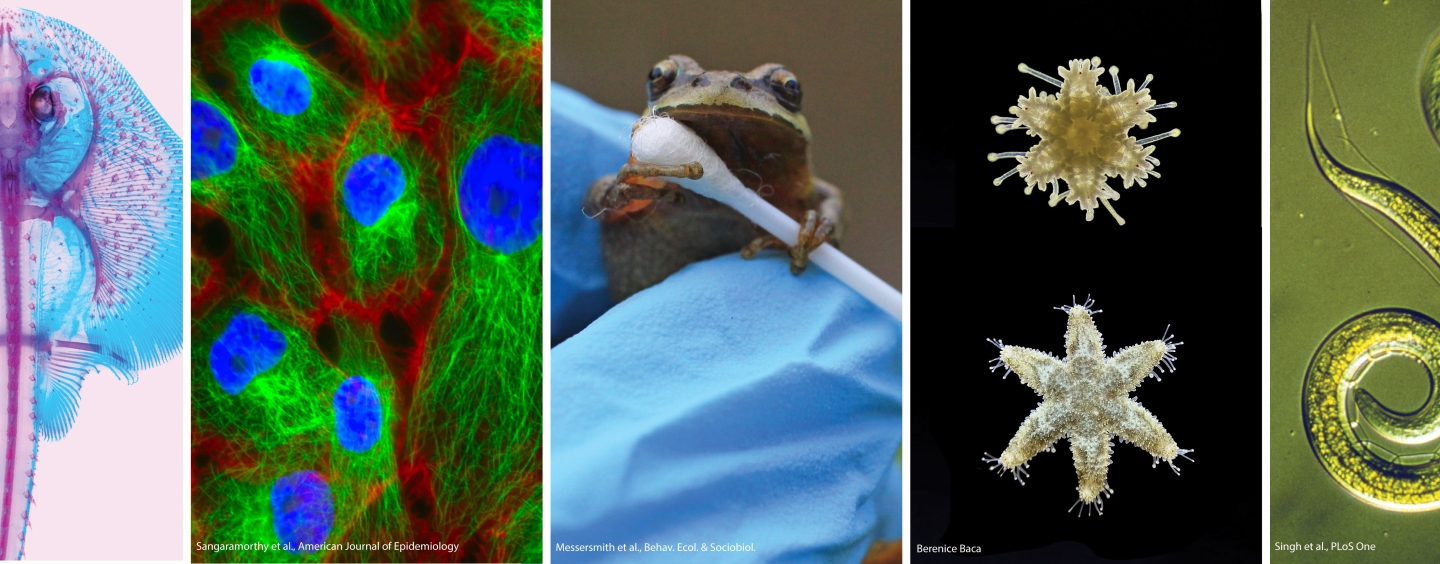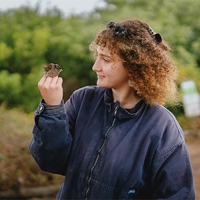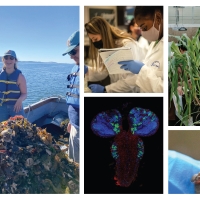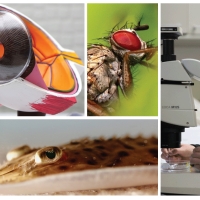More 2024 Research Highlights!

In 2024 our faculty and students published over 60 ground-breaking research articles, across a wide range of disciplines. Our faculty are highly collaborative, giving our work a global reach.
Every paper we publish advances the frontier of Biology, and we're incredibly proud of the work of our faculty as they mentor and support the next generation of Biologists. In this highlight, we focus on publications authored by students conducting research here at SF State Bio, both in collaboration with department faculty, and with other researchers from around the globe.
How do you turn a skate into a ray? Masters student Emily McFarland (now a PhD student at UCSD/Scripps) and Professor Karen Crow published a paper titled "The evolution of cephalic fins in manta rays and their relatives: functional evidence for initiation of domain splitting and modulation of the Wnt signaling pathway in the pectoral fin AER of the little skate" in the Journal EvoDevo. This study demonstrated the important role of the Wnt pathway in the development of body plans that are specific to either skates or rays. Skates normally lack the cephalic fins that are characteristic of manta rays, but by applying wnt-pathway modulators at specific developmental points to Little skate embryos, the authors showed that skate-like fins begin to develop into the manta ray phenotype. This image shows the cartilaginous skeleton of the Little skate, Leucoraja erinacea.
Assistant Professor Cathy Samayoa published "Association between Neighborhood Stressors and Allostatic Load in Breast Cancer Survivors: The Pathways Study" in the American Journal of Epidemiology, in collaboration with researchers at USCF, Kaiser Permanente California, and Roswell Park Comprehensive Cancer Center in Buffalo, NY. This image shows cultured, stained breast cancer cells. Image courtesy of the National Cancer Institute, National Institutes of Health.
In a collaboration between two SF State Bio labs (the Vredenburg Lab and the Velez lab), Masters students Julia Messersmith, Esther Azar and Kurt Lutz demonstrated that female frogs do not seem to choose against males infected with the Bd pathogen, which is implicated in mass extinctions of amphibians worldwide. Their paper titled "Infection by a fungal pathogen and mating behavior in Pacific treefrogs: a test of the Hamilton-Zuk hypothesis" was published in the Journal Behavioral Ecology and Sociobiology. The Hamilton-Zuk hypothesis posits that females can distinguish, and are more likely to select against, males with heavy parasite or infection loads. This hypothesis is widely accepted and has been demonstrated in other species, but this collaboration found little support for it in frogs. This study was featured in the SF State News, and you can read the full article here. Assistant Professor Alejandro Velez is now at the University of Tennessee Knoxville.
Masters student Berenice Baca and Faculty mentor Professor Sarah Cohen celebrated a major breakthrough in marine conservation this year, with the successful laboratory culture of the six-rayed sea star, Leptasterias through a full year. This breakthrough will help this species and others withstand pressures associated with disease and habitat loss in the wild. Berenice's work (and the stars' birthday celebration) was also featured in SF State News, which can be read here.
Lastly, two SF State Bio labs, one studying sperm in C. elegans and led by Professor Diana Chu, and a bioinformatics lab led by Professor Scott Roy, collaborated to publish "Nematode histone H2A variant evolution reveals diverse histories of retention and loss and evidence for conserved core-like variant histone genes" in the journal PLoS One. Students from SF State Bio and UC Merced showed that histones, proteins important in the structural organization of DNA, are variable over evolutionary timescales yet have preserved functions, suggesting redundancy in their function.



